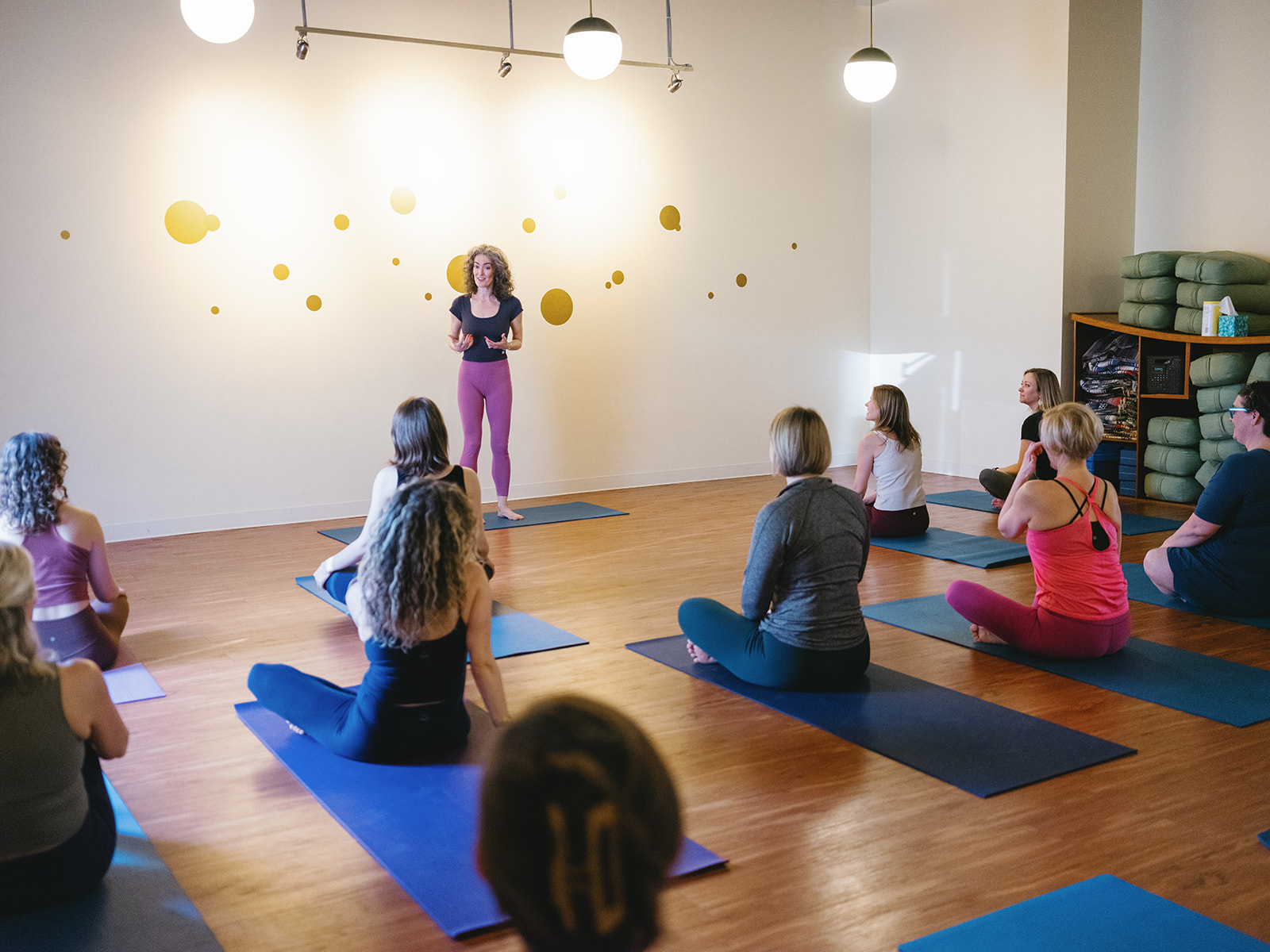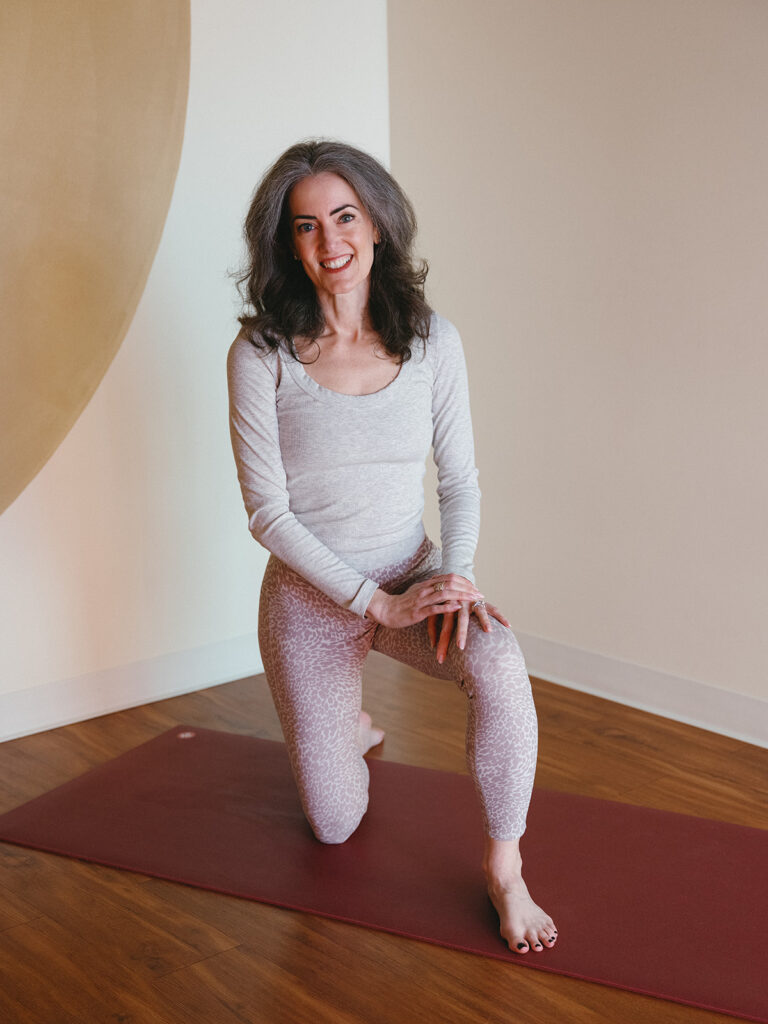Consistency is key for growth in yoga classes and in life. But how do we balance consistency with the need for variety to keep our practice fresh and engaging? Let’s explore the importance of both through the lens of Patanjali’s wisdom and practical approaches to structuring your yoga classes.
As Patanjali explains in Yoga Sutra 1.14, your practice becomes well rooted when it is attended to diligently for a long time, without ceasing. This level of consistency is critical for your practice, because you need to develop the good habits that form a broad-based pyramid. Later, you can build in some variety on top of that, but your consistent practice must come first.
You may already recognize this as a yoga practitioner. I bet you saw your practice advance when you committed to getting on your mat regularly most days of the week.
What does the importance of consistency mean for you as a yoga teacher?
The Consistency–Variety Continuum in Yoga
Think of a sliding scale ranging on one end from too much discipline, too much sthira (that is, strength, effort), not enough ease, to on the other too much freedom, too much sukha (ease), not enough stability.
At one end of the consistency–variety continuum is doing the same thing every time. Some styles of yoga—Ashtanga and Bikram Yoga, most notably—repeat the very same sequence over and over. This allows practitioners the consistent familiarity of shapes even as their bodies adapt and grow. The upside of this approach is the comfort of regularity and seeing yourself progress week to week. The downside is that eventually bodies plateau when they are faced with the very same stimulus over and over.
At the other end of the consistency–variety continuum is a practice that constantly changes. This could look like different poses, different flows, different breath exercises, different meditation cues, even different teachers week in and week out. That also isn’t great for long-term growth, as there is no specificity and thus can be no progressive overload. If everything is always different, there’s no through-line and no consistency.
Find the Right Balance in Your Yoga Lesson Plans
The middle path is to find a good balance between consistency and variety. When you use the 6–4–2 model I present in The Art of Yoga Sequencing, you’ll already have the metastructures in place.
In The Art of Yoga Sequencing and in my mental map of how to structure classes, one model I use is building an outfit. Think of your wardrobe basics: jeans and a white shirt, for example. They work in a broad variety of situations—especially if you accessorize them well! There’s no need to change out the core pieces every day.
In fact, if you think of planning your next few weeks of classes, it’s almost like packing for a trip or building a capsule wardrobe. You’ll focus on choosing a few pieces you can rewear (or easily wash in a hotel sink) and combine in different ways depending on the weather and the context. Then you can layer on accessories to add a little variety and interest—without needing to make big changes to the core pieces that are keeping you covered, decent, and warm.
The middle path is having a recognizable uniform that’s well accessorized.
Exactly How Consistent Should Your Yoga Lesson Plans Be?
What proportion of class should you be changing week to week? Probably no more than a quarter. Otherwise, you’re increasing the mental load for your students. This steeper learning curve makes it harder for them to feel present and relaxed in a sequence.
If you look out in the room and see students moving into postures before you even call them out, that means you’ve built a firm base of consistency for your pyramid. Great! Now you might want to introduce some more variety, so that students have to pay attention and stay focused and present. They can’t just zone out. And this doesn’t need to be a wholesale change. Instead, think of it as adding a new accessory—a scarf, a hat, a piece of jewelry—to a familiar outfit.
How to Add Variety in Your Class
Here are some things you can change to sprinkle in variety without changing your core sequence:
- Differ the presentation of the poses by stringing together more shapes on one side at a time
- Or do the opposite: do each pose on one side, then the other, and notice the difference from side to side
- Add new movements with the arms even as the legs hold a familiar shape. For example, in warrior II, add cow-face arms or eagle-pose arms.
- Change the surface on which you’re standing—try standing on a blanket, bolster, or block to add balance challenge
- Move to the wall and use the wall for feedback (e.g., in tree pose, stand with your back to the wall, one arm to the wall, your straight-leg outer hip to the wall, or your bent-leg knee to the wall)
- Take a familiar sequence and change its relationship to gravity. For example, do your usual table-pose-based warmup from your back, or take the standing poses you’ve been working recently and find ways to make them core work or hip stretches
Want to read more?


